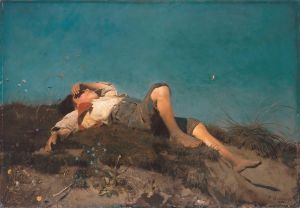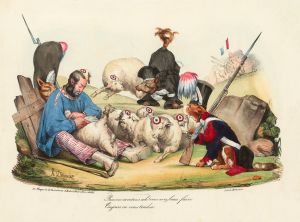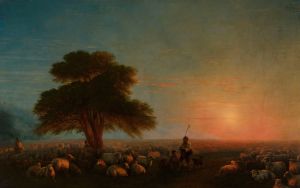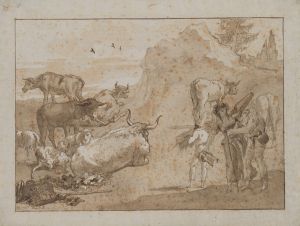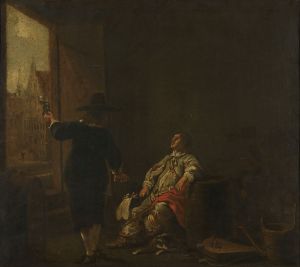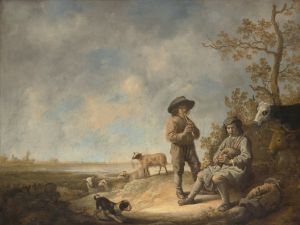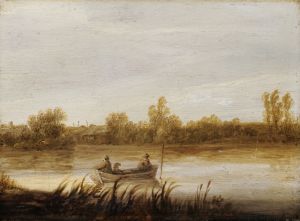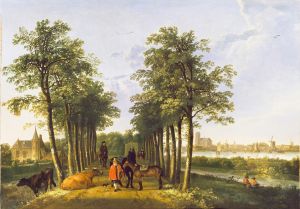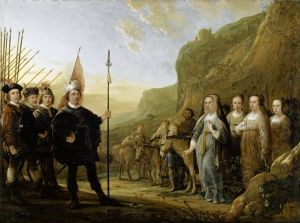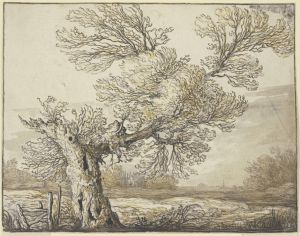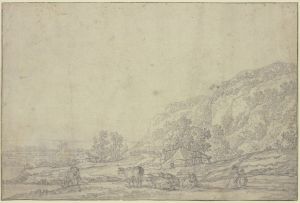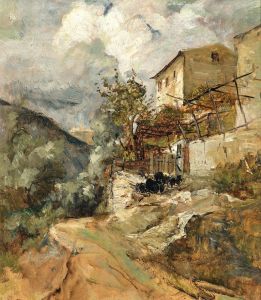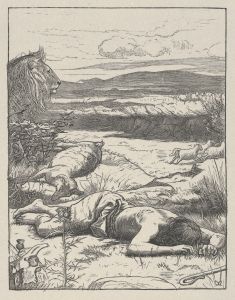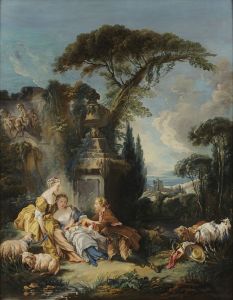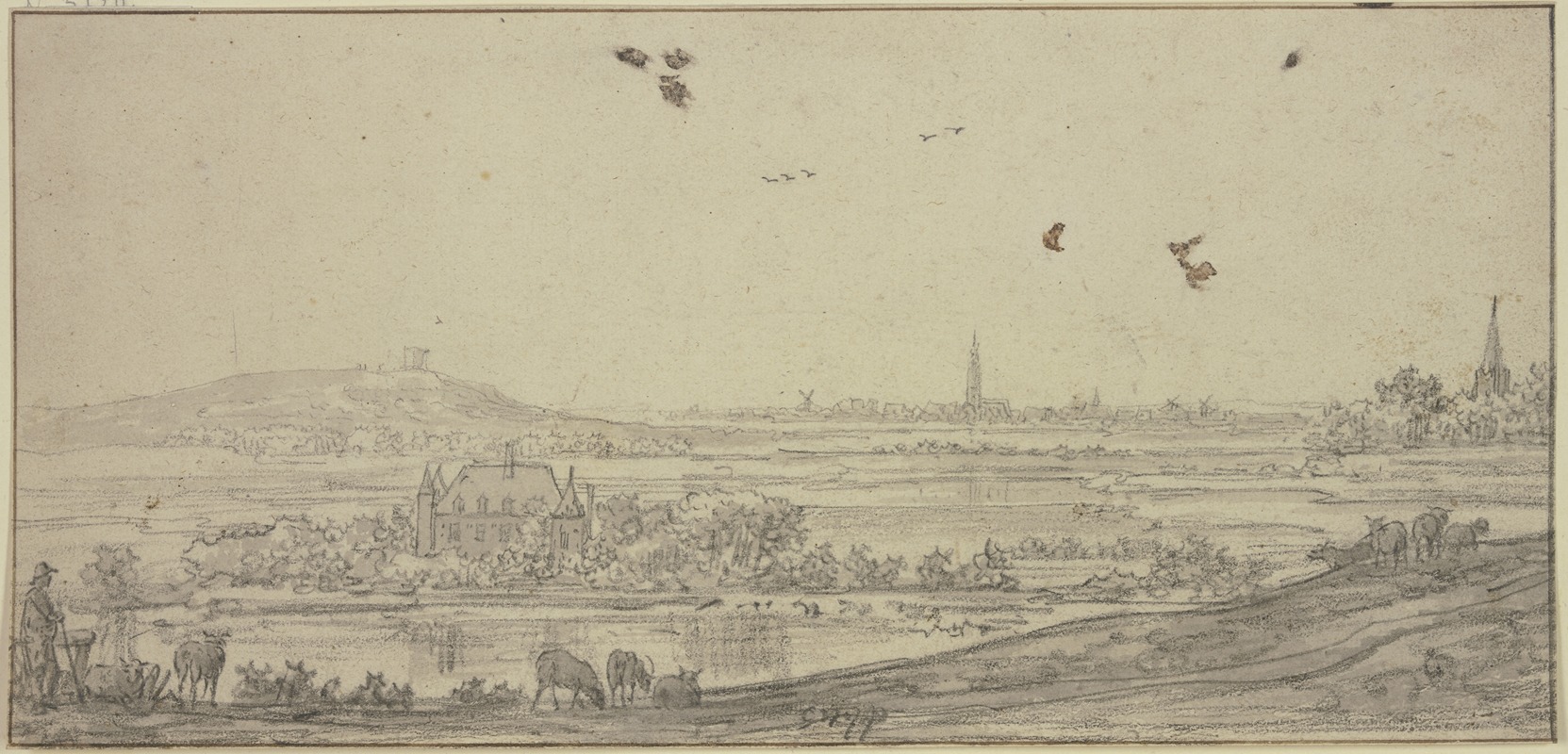
In der Ferne eine Stadt, links ein Haus im Wasser, vorne ein Schafhirte
A hand-painted replica of Aelbert Cuyp’s masterpiece In der Ferne eine Stadt, links ein Haus im Wasser, vorne ein Schafhirte, meticulously crafted by professional artists to capture the true essence of the original. Each piece is created with museum-quality canvas and rare mineral pigments, carefully painted by experienced artists with delicate brushstrokes and rich, layered colors to perfectly recreate the texture of the original artwork. Unlike machine-printed reproductions, this hand-painted version brings the painting to life, infused with the artist’s emotions and skill in every stroke. Whether for personal collection or home decoration, it instantly elevates the artistic atmosphere of any space.
Aelbert Cuyp was a prominent Dutch landscape painter of the 17th century, known for his idyllic and atmospheric depictions of the Dutch countryside. His works are celebrated for their luminous quality and the serene beauty of their compositions. One of his paintings, "In der Ferne eine Stadt, links ein Haus im Wasser, vorne ein Schafhirte," exemplifies these qualities, although specific details about this particular painting are limited.
Cuyp was born in Dordrecht in 1620, into a family of artists. His father, Jacob Gerritsz Cuyp, was also a painter, and Aelbert likely received his initial training from him. Aelbert Cuyp's works are often associated with the Dutch Golden Age of painting, a period characterized by great wealth and cultural achievement in the Netherlands. This era saw a flourishing of the arts, with landscape painting becoming a particularly popular genre.
Cuyp's paintings are renowned for their warm, golden light, which often bathes his landscapes in a tranquil glow. He had a remarkable ability to capture the effects of light and atmosphere, which is evident in many of his works. His landscapes frequently feature pastoral scenes with cattle, shepherds, and expansive skies, reflecting the agrarian life of the Dutch countryside.
"In der Ferne eine Stadt, links ein Haus im Wasser, vorne ein Schafhirte" likely follows this thematic tradition, depicting a serene rural scene. The title suggests a composition that includes a distant city, a house by the water on the left, and a shepherd in the foreground. Such elements are typical of Cuyp's work, where he often combined natural and man-made features to create harmonious and balanced compositions.
Cuyp's paintings are also noted for their compositional clarity and the careful arrangement of elements within the scene. He often used a low horizon line, which allowed for expansive skies that contribute to the sense of openness and tranquility in his landscapes. This technique is likely employed in "In der Ferne eine Stadt, links ein Haus im Wasser, vorne ein Schafhirte," enhancing the painting's sense of depth and space.
Throughout his career, Cuyp's work was highly sought after, and he enjoyed considerable success. His influence extended beyond the Netherlands, impacting artists in England and other parts of Europe. Today, his paintings are held in major museums and collections worldwide, where they continue to be admired for their beauty and technical mastery.
While specific information about "In der Ferne eine Stadt, links ein Haus im Wasser, vorne ein Schafhirte" is limited, it can be appreciated within the broader context of Cuyp's oeuvre. His ability to capture the serene beauty of the Dutch landscape and his masterful use of light and composition have secured his place as one of the foremost landscape painters of his time.





